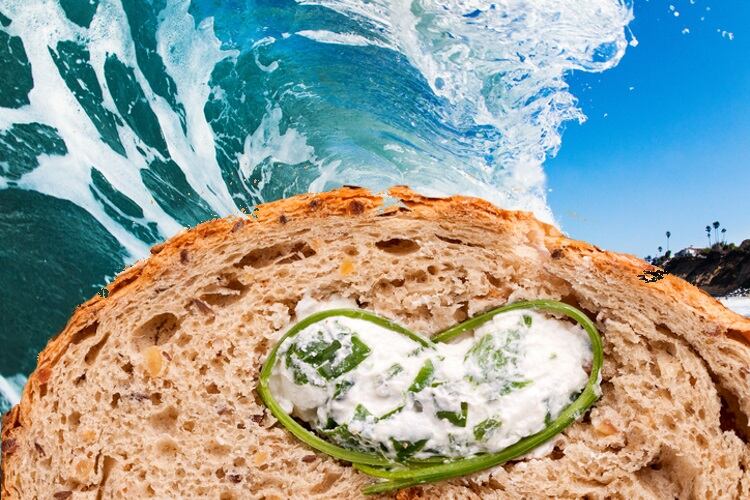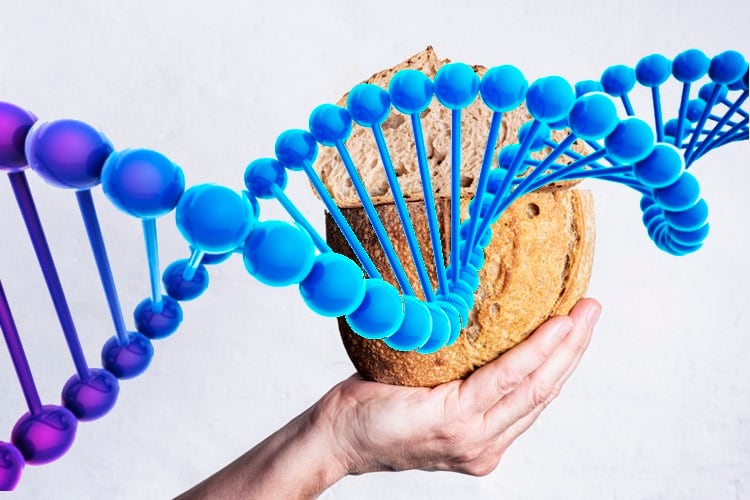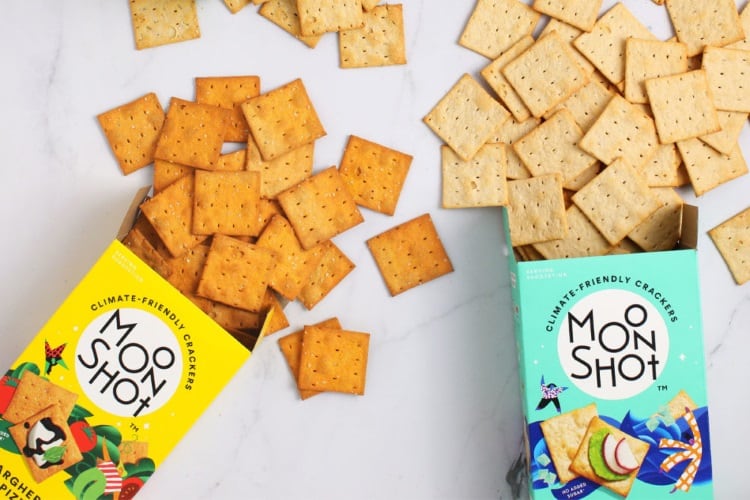The executives behind food strategy consultancy Changing Tastes - husband and wife team Arlin and Penelope Wassermann - launched Sea & Flour and the concept of a breakthrough line of baked goods at the UN Ocean Conference held in Portugal last year.

Laverbread is a food product (bara lawr) made from an edible seaweed that grows along the Welsh coastline. It has a unique texture and salty flavour, traditionally eaten fried with bacon and cockles as part of a Welsh breakfast, made into a soup or sauce, or added to artisanal oatcakes, shortbread and cheese. It is also found on east coast of Ireland, where it is also known as sleabhac or slake.
Wild dulse has long been a dietary staple of people in Ireland, Scotland and Wales. It is a smoky, salty, bacon-like flavoured seaweed that will add a healthy kick to any daily meal or smoothie; crisped up in the oven to add to roasted veg; chopped raw for a vibrant crunchy addition to salad; or dried and sprinkled over popcorn.

The umami bread from Momoshares is a butter-rich dough studded with roasted seaweed, Japanese-style mayo, pork floss and scallions.
After even more intensive R&D, the bakery manufacturer will be rolling out a line of bread, buns, rolls and pizza dough into US retail in the second half of 2023.
Sea & Flour’s line of commercial bread products features a blend of clean label seaweed as its primary ingredient: meaning the products don't only boast a higher protein and lower sodium than many standard bread loaves but are also carb-positive (lower calories) and carbon-negative that will help address climate change and expand regenerative coastal agriculture and the blue economy.
While the concept is not new - recipes abound on the net for bakes like laverbread sourdough, dulse bread and umami bread - the Philadelphia-based company is the first to integrate seaweed into commercial bakery.
It has also earned a patent for its state-of-the-art tech to successfully incorporate seaweed into this intensive process.
US Patent No. 11,717,010) pertains to the process of cold washing, processing and granulating seaweed for use in breads and other related products. The process ensures the seaweed can be successfully incorporated into high-volume baking, while delivering the flavour and nutritional benefits of the sea.
“We developed a novel way to process seaweeds so they can be combined with common grains and flours in the commercial baking process.
“Being awarded this patent is recognition of the uniqueness of our approach and the methods we developed and perfected over several years,” said Arlin Wasserman, CEO of The Sea & Flour Baking Company.
“We’re making seaweed perform successfully as a key ingredient in food manufacturing including in everyday products like breads, rolls and pizza crusts, and we’re excited to see this nutritious and sustainable ingredient play a larger role in our diets.”
Added Penelope Wasserman, president, “We’ve learned from extensive market research that a significant share of American consumers now want to find ways to eat seaweed more often.”
Consumer research conducted by Changing Tastes in January 2022 found that 32% of Americans have tried seaweed, with 18% wanting to eat more of it and 25% of those who had never tried it wanting to do so.
With 600 million slices of bread being devoured each day by Americans, incorporating the superfood into this versatile staple was an obvious move.

There are 20,000 species of seaweed, all of which are edible, though some are more palatable than others. Among the most popular sea vegetables are nori, wakame, kombu, dulse, arame, umibudo (seaweed grapes), dulse, kelp, carragheen, laver and sea lettuce.
“Your typical bread products may taste delicious, but they often lack nutritional value,” said Penelope Wasserman, who is also a member of the Bone Health & Osteoporosis Foundation’s Ambassadors Leadership Council.
“Osteoporosis and hypertension are two of the most common chronic diseases plaguing Americans today. Sea vegetables help keep our bones strong and are a rich source of vitamin K and calcium, which help prevent bone loss. Sea & Flour products help consumers get more out of what they’re already eating, adding rich health benefits while also being better for the Earth.”
Why put seaweed in bread?

It’s good for people
Seaweed is rich in protein and essential vitamins and minerals: actually, it’s the best bioavailable source of most nutrients and specifically high in vitamin A and K, as well as a good source of iron, calcium, folate, magnesium and zinc.
It can be used to replace sodium content in foods (healthy heart); is the best dietary source of iodine (support the thyroid gland); and packs in antioxidants (protects against cell damage), and fibre (preventing many chronic diseases).
It’s good for the planet
Farming seaweed is a carbon-negative process: decreasing carbon and nitrogen while increasing oxygen levels. According to Sea & Flour, it is instrumental in encouraging ‘species of marine life back to areas that haven’t been seen in decades.
‘Conventional baking with sea plants will help expand regenerative farming in coastal communities, creating new livelihoods for people who are struggling because fish have left due to climate change.’
It’s good for society
The company contends that by eating Sea & Flour bread, consumers will have a hand in reversing the effects of global warming.
‘Today, our children don’t believe their future is sustainable because of the fearful messages they get without any realistic options for change. Making foods they already eat and like part of the solution brings about positive impact and changes the collective consciousness to one that’s hopeful instead of hopeless giving a new meaning to our daily bread.’
“Our goal is to help food manufacturers and retailers make products that consumers already love do more for them in terms of nutritional value while also doing more for the planet,” added Arlin Wasserman.





